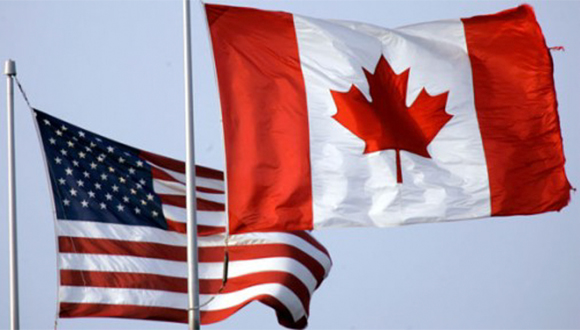President Donald Trump’s tariff threat on steel and aluminium imports is set to begin on March 12. This has caused frustration among Canada, one of America’s closest allies and trading partners. The administration has paused a threat for 30 days to hit Canada and Mexico with 25% tariffs on products across the two economies after announcements of agreements to bolster border security. The situation is uncertain whether a similar last-minute reprieve will occur in the case of tariffs on steel and aluminium.
The United States and Canada have closely intertwined economies, and any sustained tariffs would mean pain on both sides. Ford CEO Jim Farley warned that 25% tariffs on products from Canada and Mexico would “blow a hole in the U.S. industry that we’ve never seen.” Tariffs are effectively a tax and tend to lead to retaliation, raising costs to consumers and complicating or possibly severing supply chains.
Canada is not just a country next door but also the top export destination for 34 U.S. states, including Michigan. In December alone, Canada accounted for 13.9% of total U.S. trade, more than $62 billion. Detroit and Windsor, Ontario, are connected pieces of an auto ecosystem. Governor Gretchen Whitmer pointed to Detroit-Windsor as the busiest active border crossing in North America, driving more than a quarter of the $700 billion of annual trade between the two countries.
She said she isn’t opposed to tariffs outright but shouldn’t be used to punish the country’s closest trading partners. Doing so hurts all of us, damaging supply chains, slowing production lines, and cutting jobs on both sides of the border.
“If enacted, Trump’s tariff would have a significant negative impact, not only for Canada’s economy but also for the U.S. economy,” says Trevor Tombe, Professor, Department of Economics at the University of Calgary, explaining that if other countries retaliated with tariffs of their own, the ensuing trade war would result in roughly $800 USD ($1,100 CAD) in foregone income annually for people on both sides of the border.
“There’s an opportunity to learn from long-forgotten history, here. It turns out that the 10% tariff recently proposed by Trump has some echoes of a tariff that was enacted by President Nixon back in 1971. That policy—which was much narrower than Trump’s recent proposal—was a disaster and was quickly reversed.”
Tombe says that while the critical importance of trade with the U.S. is generally understood by Canadians, many Americans do not realize that Canada is such a critical and reliable supply chain partner for U.S. companies and consumers and serves as the top export destination for 34 U.S. states.
The US auto industry is facing a potential blowout due to the implementation of auto tariffs on Canada and Mexico. Components from one country for an engine may be made in another before heading elsewhere for final assembly. Automakers, such as Ford, General Motors, Stellantis, Toyota, and Honda, have significant operations on both sides of the border, as do their suppliers. The relationship between these countries is like a dynamic living organism, with all working on just-in-time delivery at their own talent base and locale.
The 1965 Canada-United States Automotive Products Agreement, known as the Auto Pact, set the stage for later trade deals that included Mexico. If tariffs are fully implemented on U.S. and Canada trade, it could lead to a return to the pre-Auto Pact days, which would lead to less importing and smaller volumes of various models produced by plants in Canada and Mexico. However, costs would rise significantly, leading to higher average vehicle transaction prices and lower production, leading to layoffs.
A key point in the president’s orders on the steel and aluminium tariffs and the paused 25 percent tariffs is that they were written to exclude a provision called the duty drawback, which effectively prevents parts crossing the border multiple times from being subject to tariffs each time. Eliminating the drawback would be a big deal for the auto industry, as it would kill the supply chain back and forth.
Canada is the U.S.’s largest oil supplier, and the US generally has balanced trade in oil but imports a lot due to different grades in the petroleum business and tuning refineries to Canadian grades.
Canada’s planned “first phase” response to the initially announced but paused Trump tariffs includes 25% tariffs on various products, including orange juice, peanut butter, wine, spirits, beer, coffee, appliances, apparel, footwear, motorcycles, cosmetics, and pulp and paper.
The threat of tariffs from such a close ally is described as disconcerting, with countries like China and Russia potentially benefiting from these tariffs. The topic of tariffs in Canada has been widely discussed on the street and in the news media this year. David Soberman, a professor of marketing at the Rotman School of Management at the University of Toronto, believes that if tariffs are levied, they would have a negative impact for both sides. He believes that Canadians will be upset about it and demand retaliation by their politicians, leading to retaliatory tariffs. However, he also notes that a trade war typically results in everyone losing, which is the problem.
Source: USA Today
Source: Canadian Chamber of Commerce










